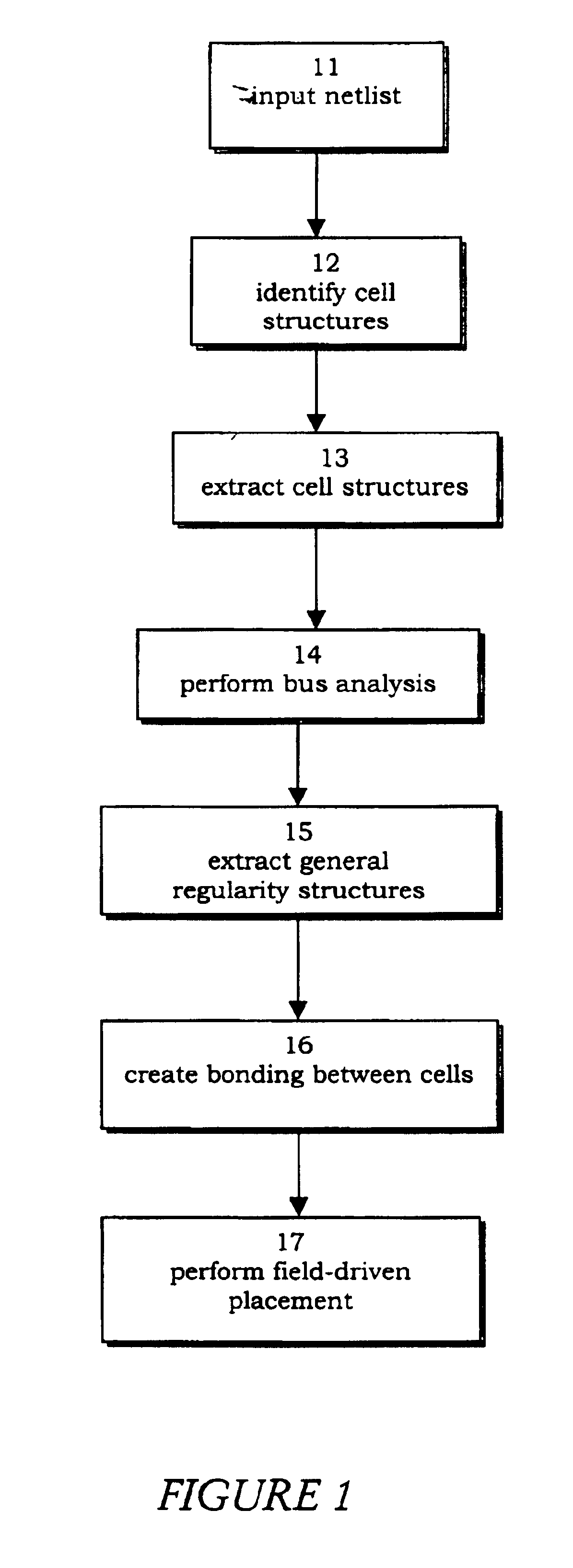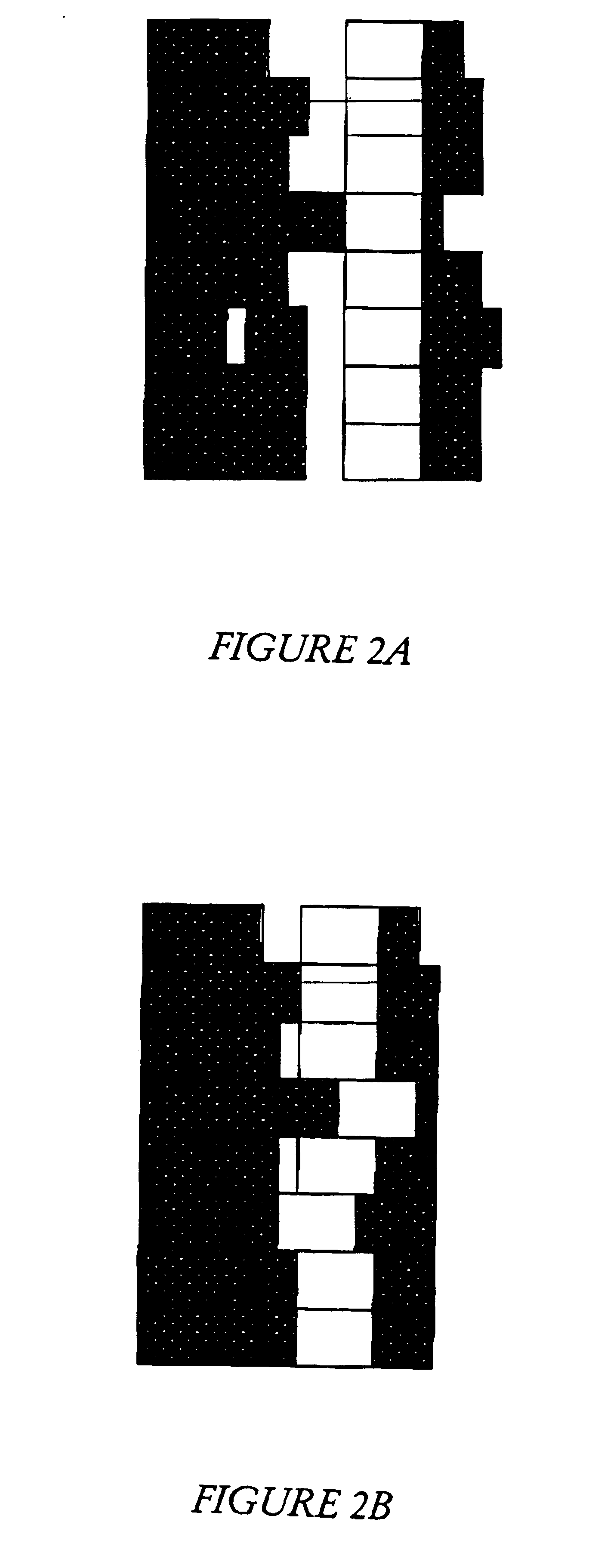Method and apparatus of relative datapath cell placement with structure bonding
a technology of relative datapath and cell placement, applied in the field of computer-aided design (cad) of integrated circuits, can solve problems such as prohibitively restrictive techniques, unsatisfactory random or irregular structure, and large computation time requirements for approaches
- Summary
- Abstract
- Description
- Claims
- Application Information
AI Technical Summary
Problems solved by technology
Method used
Image
Examples
Embodiment Construction
FIG. 1 is a flow diagram of illustrating process steps by a placement engine 10 for the placement of cell instances in a structure bonding. Placement engine 10 processes placement steps so that each step generates a new placement based on an existing placement. Each placement step modifies an existing placement by combining attraction actions between connected cell instances with repulsive actions between cell instances. Placement engine 10 receives 11 an input netlist and identifies 12 cell structures from the netlist. Cell structures are extracted 13 from the netlist by placement engine 10 to perform 14 bus analysis. Placement engine 10 then extracts 15 general regularity structures and creates 16 bonding between the extracted cells. Subsequently, placement engine 10 performs 17 of field-driven placement of cell instances on a density partition map.
FIG. 2A is a pictorial diagram illustrating one fundamental relative structure in dapapath in a column structure 20. Column structure ...
PUM
 Login to View More
Login to View More Abstract
Description
Claims
Application Information
 Login to View More
Login to View More - R&D
- Intellectual Property
- Life Sciences
- Materials
- Tech Scout
- Unparalleled Data Quality
- Higher Quality Content
- 60% Fewer Hallucinations
Browse by: Latest US Patents, China's latest patents, Technical Efficacy Thesaurus, Application Domain, Technology Topic, Popular Technical Reports.
© 2025 PatSnap. All rights reserved.Legal|Privacy policy|Modern Slavery Act Transparency Statement|Sitemap|About US| Contact US: help@patsnap.com



